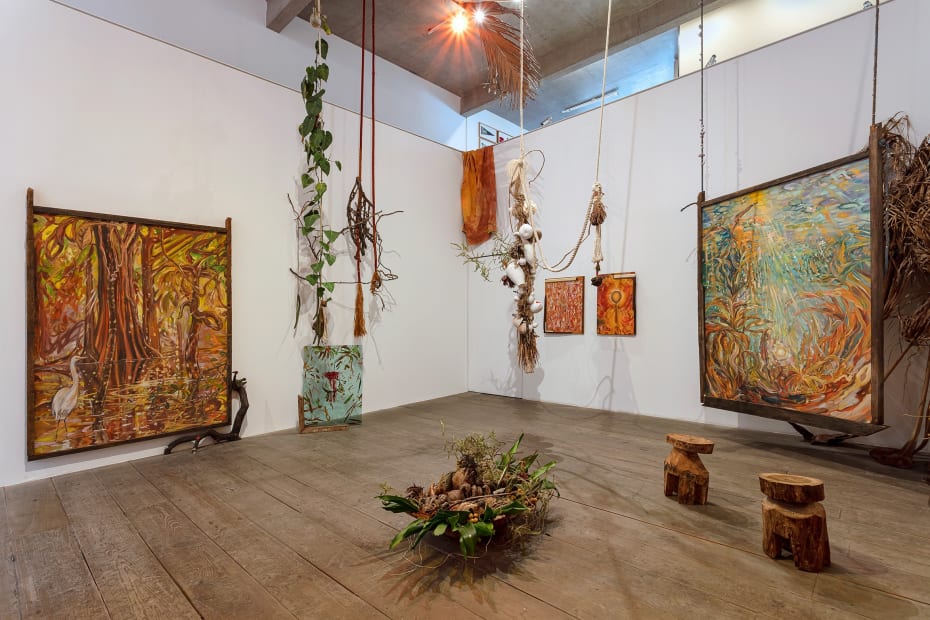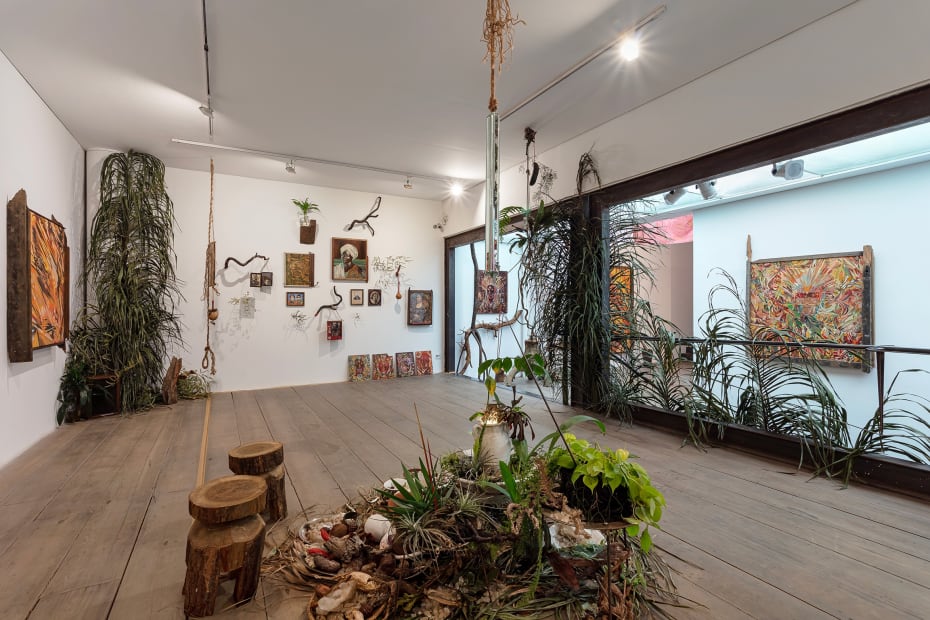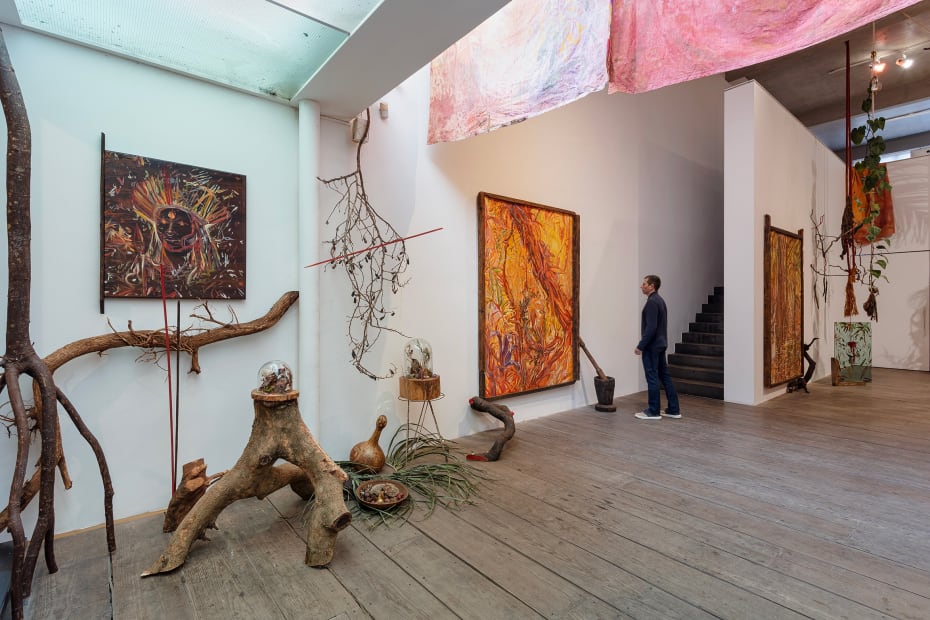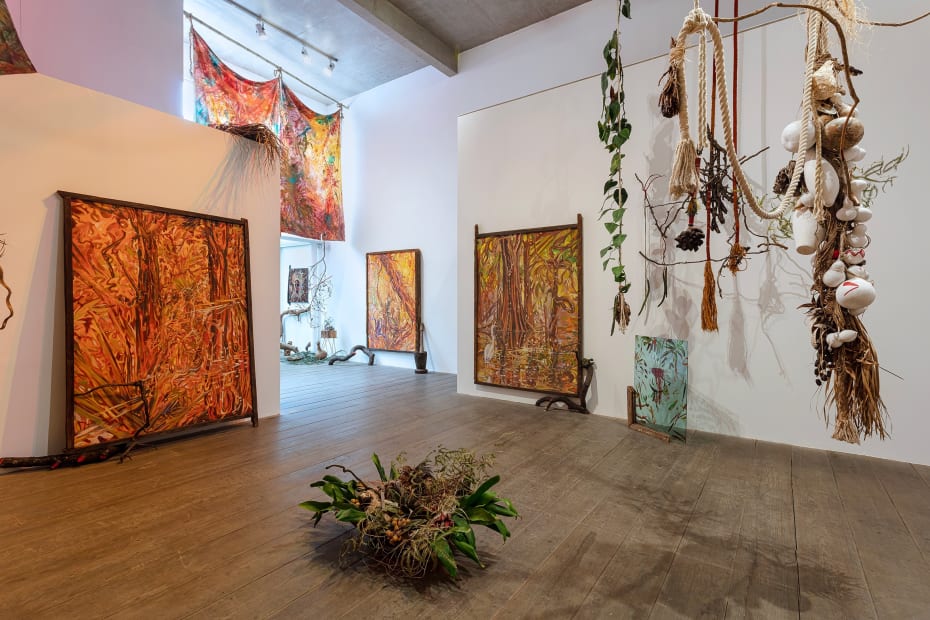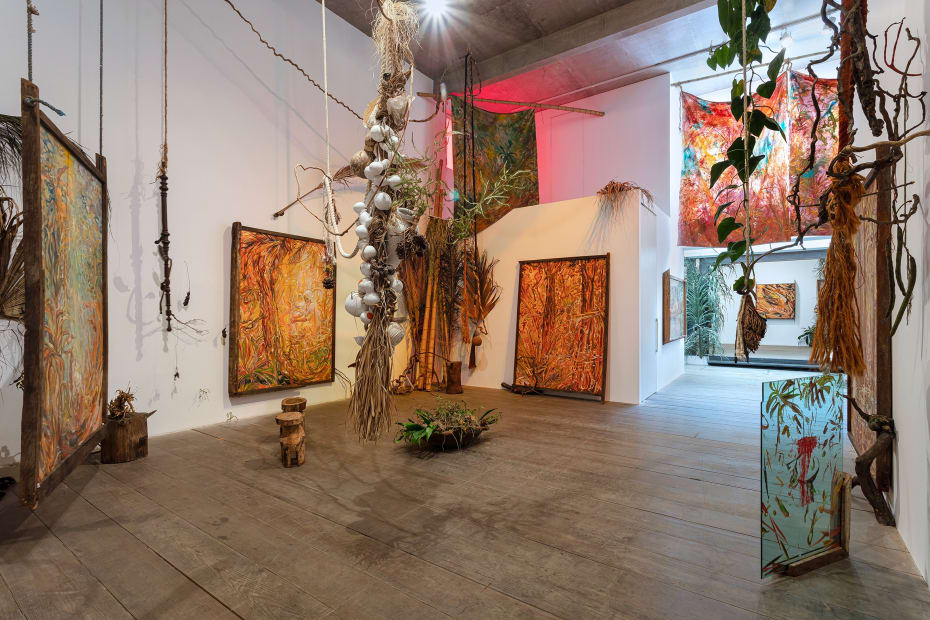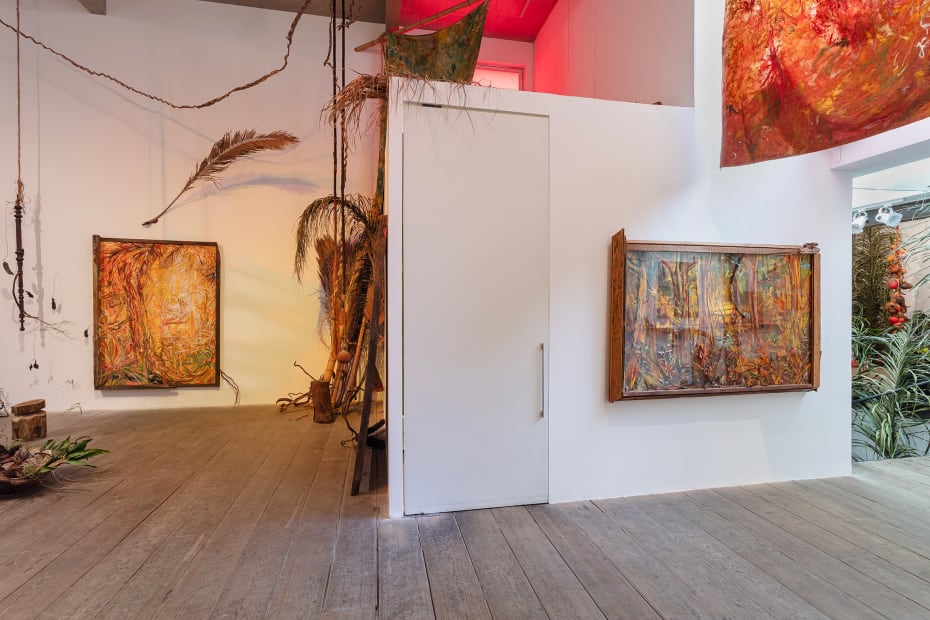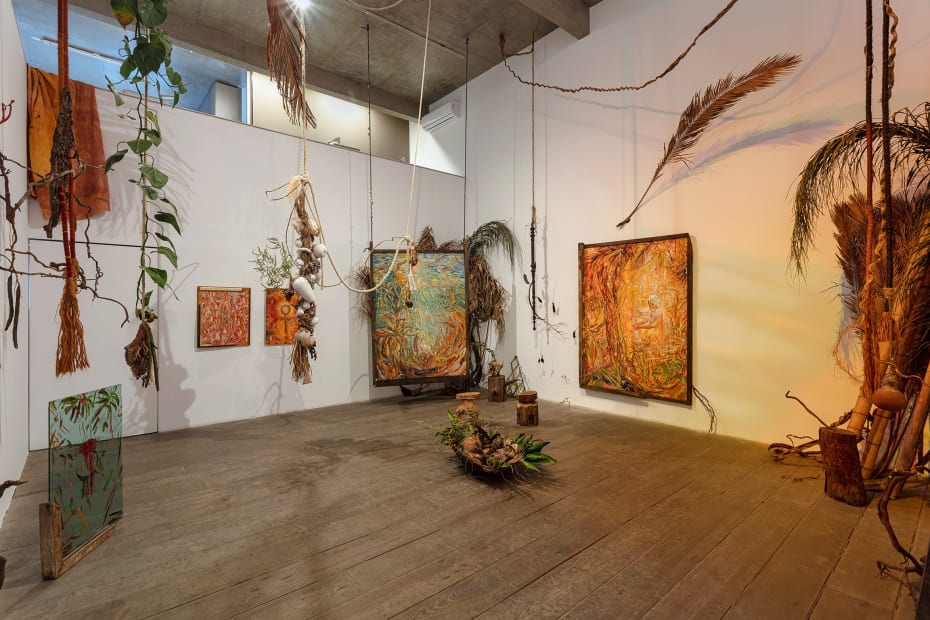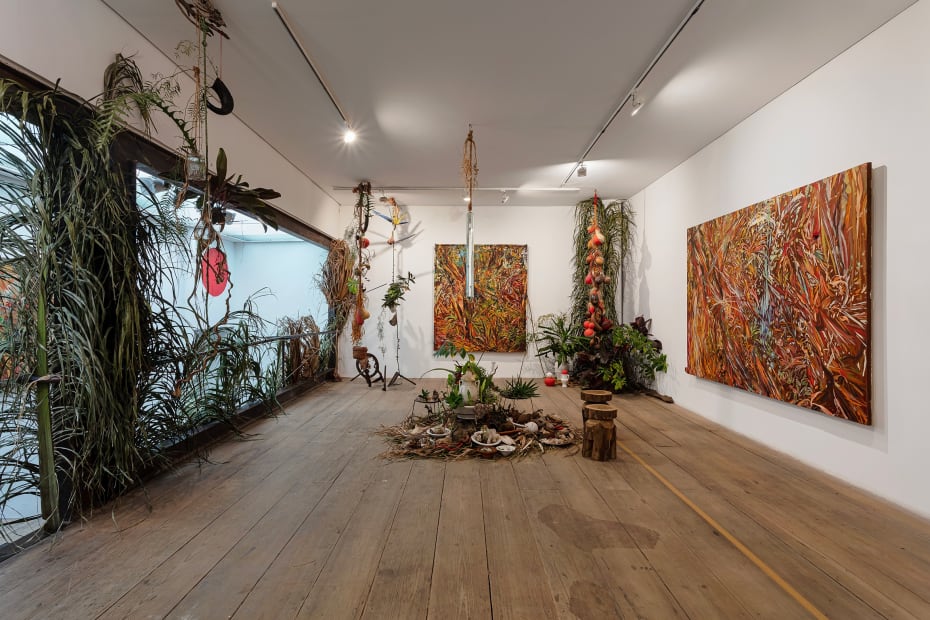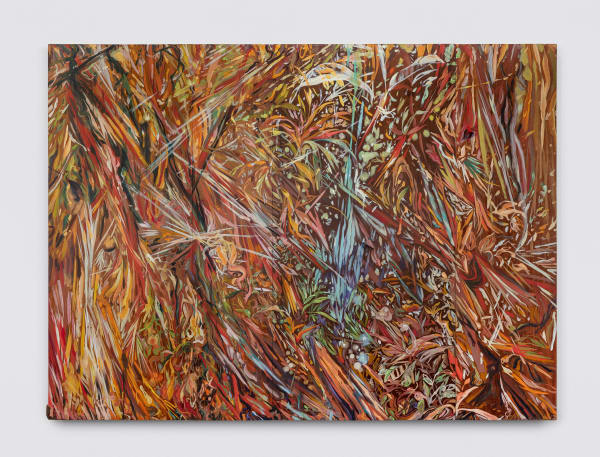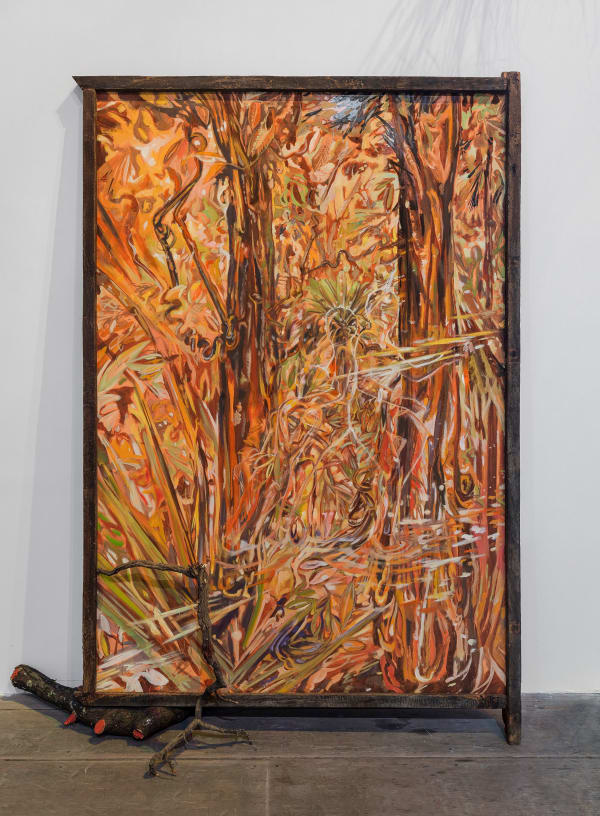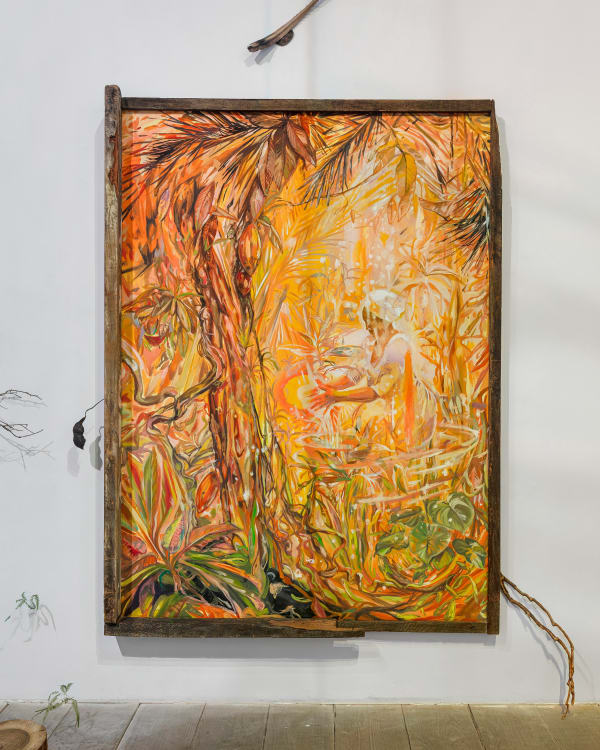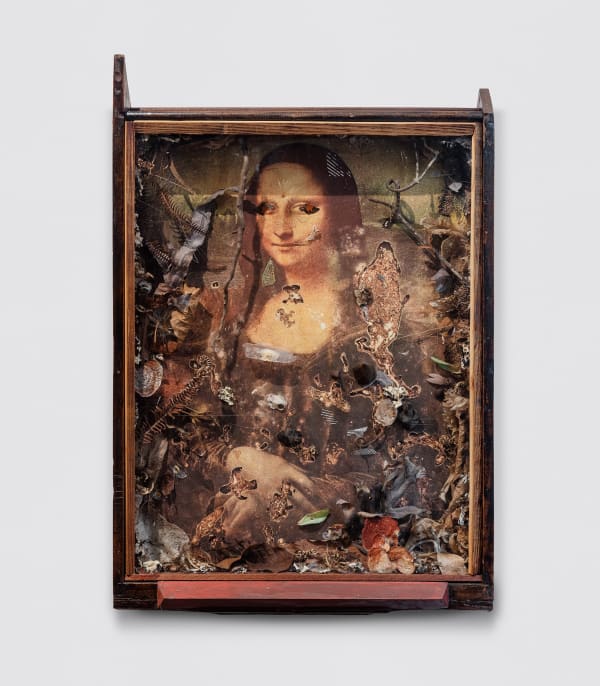RODRIGO BUENO: PEDRINHA MIÚDA (Little Stone)
RODRIGO BUENO
PEDRINHA MIÚDA
ABERTURA
Sábado, 26 de Agosto de 2023, das 11h - 16h
PERÍODO EXPOSITIVO
26 de Agosto - 07 de Outubro de 2023 (Prorrogada até 09/11)
TEXTO
LILIA MORITZ SCHWARCZ - Leia Aqui/Read Here
HORÁRIO DE VISITAÇÃO
seg- sex, 10h30-19h / Sáb, 11h às 16h
Tel: +55 11 3079-0853
Rodrigo Bueno (1967) presents Pedrinha Miúda [Little Stone], a solo exhibition in Sala 1 at Galeria Marilia Razuk, from the 26th of August to the 7th of October 2023. The show includes oil paintings on canvas, fabric, and, above all, wood — a material used in many of the artist’s works, whether as a supportfor his creations or as a central element in his sculptures and installations. The exhibition also includes works made with materials recovered from the street — fragments of furniture, metal, ropes, city debris — collected and curated[1] by Rodrigo, which, put together with natural elements, create an atmosphere of immersion into Pedrinha Miúda territory.
And speaking of territory, Rodrigo asks permission from the ancestors of a place as part of his creative process. Itaim, which comes from the Tupi word Itahy, can be translated as “pedra pequena [small stone], pedra miúda [little stone].” And, according to historian and anthropologist Lilia Moritz Schwarcz, who wrote the exhibition text: “What then, finally, is “Pedrinha Miúda”? It is a sensory[2] experience. Everything is separated and together. Everything at the same time and in its own time.”
Pedrinha Miúda provokes an experience. It evokes our ancestry, our multidimensionality, our senses and perceptions, our relationship with the city and nature, our relationship with time, and with each other. Above all, it evokes our roots, in indigenous and Black traditions, the caboclos (people of mixed indigenous Brazilian and European descent), as the artist says.
In another excerpt from Lilia Moritz Schwarcz's text Pedrinha Pequena é pedra grande da nossa sensibilidade [Tiny Little Stone is the Big Stone of Our Sensibility], the author writes: “The result is an art that awakens an appreciation of our history, of the cultures of our country, of its people, and, most particularly, and movingly, of the bridges that unite humanity as a part of nature. Because the artist thinks of ecology broadly, as a philosophy, as an artistic cosmology.”
-
 Rodrigo Bueno, Origem e Destino, 2022
Rodrigo Bueno, Origem e Destino, 2022 -
 Rodrigo Bueno, Pedrinha Miúda, 2023
Rodrigo Bueno, Pedrinha Miúda, 2023 -
 Rodrigo Bueno, Eresada, 2023
Rodrigo Bueno, Eresada, 2023 -
 Rodrigo Bueno, Caboclo Lirio, 2023
Rodrigo Bueno, Caboclo Lirio, 2023 -
 Rodrigo Bueno, Igapó, 2023
Rodrigo Bueno, Igapó, 2023 -
 Rodrigo Bueno, Druida, 2023
Rodrigo Bueno, Druida, 2023 -
 Rodrigo Bueno, Nanã, 2023
Rodrigo Bueno, Nanã, 2023 -
 Rodrigo Bueno, Gioconda encantada, 2023
Rodrigo Bueno, Gioconda encantada, 2023 -
 Rodrigo Bueno, Coivara Encantada, 2023
Rodrigo Bueno, Coivara Encantada, 2023 -
 Rodrigo Bueno, Coivara, 2023
Rodrigo Bueno, Coivara, 2023

